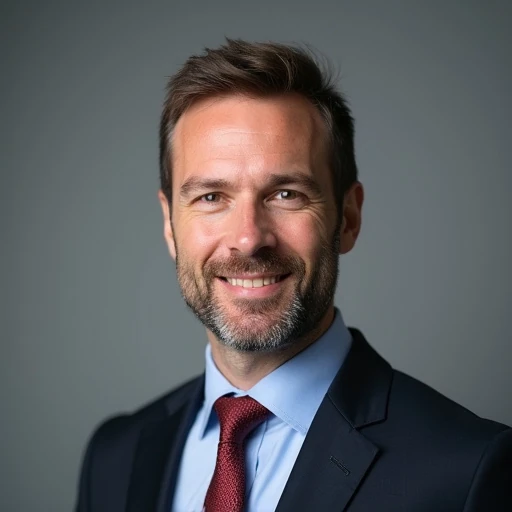The Mid-Atlantic housing market experienced a notable increase in sales activity in September, driven by a recent drop in mortgage rates. According to data from Bright MLS, closed sales across the six-state region rose by 6.2% compared to the same period last year, with over 18,600 homes sold.
This surge in activity comes as the number of available homes for sale has expanded significantly, giving potential buyers more options and creating a more balanced market. However, the positive trend is not uniform, as the Washington D.C. metro area faces distinct challenges linked to federal economic uncertainty.
Key Takeaways
- Home sales in the Mid-Atlantic region increased by 6.2% year-over-year in September.
- The median sale price for the region reached $419,000, a 2.4% annual increase.
- The number of active listings grew by nearly 27%, providing more choices for buyers.
- Washington D.C.'s market is slowing, with pending sales down 3.3% due to concerns over federal job stability.
Regional Market Sees Renewed Vigor
A downward shift in mortgage rates has injected new energy into the housing markets of Delaware, Maryland, New Jersey, Pennsylvania, Virginia, and West Virginia. The increased affordability has encouraged buyers who were previously sidelined to enter the market, leading to a visible uptick in transactions.
Data released by Bright MLS for September shows a clear trend of growth. The 6.2% increase in completed sales is a strong indicator of rising demand. While this is a positive sign, the growth in new pending sales—a forward-looking metric—was more subdued at just 0.5%. This suggests that while current activity is strong, future sales growth may be more moderate.
Alongside the sales volume, home values have continued to appreciate. The median sale price across the Mid-Atlantic climbed to $419,000 in September, marking a 2.4% rise from the previous year. This steady but not rapid price growth points to a market that is active but not overheated.
Inventory Swells, Giving Buyers an Edge
One of the most significant factors influencing the current market is a substantial increase in housing inventory. The number of active listings available to buyers shot up by nearly 27% compared to last year. Additionally, new listings entering the market saw a 10% year-over-year increase.
Shift Towards a Balanced Market
For several years, many housing markets were heavily skewed in favor of sellers, characterized by low inventory, intense bidding wars, and rapid price growth. The recent surge in listings is shifting the dynamic, creating a more level playing field where buyers have greater negotiating power and more time to make decisions.
This expansion of choice has direct consequences for both buyers and sellers. For prospective homeowners, more available properties mean less competition and a reduced sense of urgency. This is reflected in the median days on market, which has extended to 18 days, five days longer than last year. This extra time allows for more thorough property evaluations and less frantic decision-making.
For sellers, the environment has become more competitive. Dr. Lisa Sturtevant, the chief economist at Bright MLS, commented on this changing landscape.
“Sellers are adjusting to a new market reality. Buyers now have more options and more negotiating power, and price trends are starting to reflect that shift.”
This adjustment is a natural part of the market cycle, moving away from the intense seller's market of the recent past towards a more sustainable and balanced state.
Performance in Major Metropolitan Areas
The regional trends are playing out differently across the Mid-Atlantic's major cities. While Baltimore and Philadelphia are seeing robust growth in sales, Washington D.C. is contending with unique economic pressures that are dampening its housing market.
Baltimore Shows Strongest Sales Growth
Among the region's largest metro areas, Baltimore recorded the most significant year-over-year increase in closed sales, with a jump of 6.5%. Despite this strong sales activity, price growth has been minimal.
Baltimore Market Snapshot
- Closed Sales: +6.5% YoY
- Median Price: $400,000 (+0.5% YoY)
- Pending Sales: -3.1% YoY
The median home price in Baltimore settled at $400,000, an increase of only 0.5% from the previous year, marking the slowest annual price appreciation in a considerable time. Furthermore, pending sales in the city actually fell by 3.1%, and property showings also declined. Analysts at Bright MLS suggest that with new inventory coming online faster than deals are being signed, price growth is likely to remain subdued.
Philadelphia Market Remains Active
The Philadelphia metropolitan area also demonstrated healthy market activity. Closed sales were up 6.1% compared to last September, and new pending sales also saw a 2% increase, indicating a solid pipeline for future transactions.
Home prices in Philadelphia have continued their steady climb, with the median sale price rising 2.7% to $390,000. However, buyers are proceeding with more caution. Homes are now spending an average of three additional days on the market before selling, reflecting a more deliberate pace from purchasers as they navigate their expanded options.
Washington D.C. Market Diverges Amid Uncertainty
While lower mortgage rates are a boon for most of the region, the Washington D.C. housing market tells a different story. The area's heavy reliance on the federal government as a primary employer makes its real estate sector particularly vulnerable to political and economic instability in the capital.
Concerns over potential federal job reductions and the possibility of a government shutdown have created a climate of caution among prospective buyers. The impact is evident in the latest housing data.
Washington D.C. Market Snapshot
- Closed Sales: +4.4% YoY
- Median Price: $600,500 (+0.3% YoY)
- Pending Sales: -3.3% YoY
- Days on Market: 21 (An increase of 10 days YoY)
Although closed sales in D.C. did increase by 4.4%, the decline in new pending sales by 3.3% signals a slowdown. Bright MLS directly attributes this drop to buyer anxiety surrounding the federal government's stability. Price growth has stalled, with the median sale price of $600,500 representing a mere 0.3% increase from last year.
Perhaps most telling is the sharp increase in the time it takes to sell a home. Properties in the D.C. area now sit on the market for an average of 21 days, a significant jump of 10 days compared to the previous September.
Dr. Sturtevant emphasized the market's sensitivity to these external factors.
“The Washington, D.C. area is showing us how sensitive the market is to broader economic and political uncertainty. In places where the federal government has a strong presence, such as D.C., we’re already seeing the impact of the shutdown and job insecurity.”
Experts anticipate that the sales pace in the Washington D.C. market will likely remain sluggish through the fall as these economic and political concerns persist.
Outlook for the Mid-Atlantic Region
The recent decline in mortgage rates has successfully stimulated housing activity across much of the Mid-Atlantic, creating a more favorable environment for buyers. The growth in inventory has been a key factor, providing more options and tempering the rapid price increases seen in previous years.
However, the divergence of the Washington D.C. market serves as a potent reminder that local economic conditions can significantly influence real estate trends, sometimes overriding broader market forces.
While the current boost from lower borrowing costs is a welcome development for the region, analysts caution that the positive effects may be temporary. As the market continues to evolve, prospective buyers and sellers should remain informed about both regional trends and local economic factors to make the best decisions for their circumstances.





